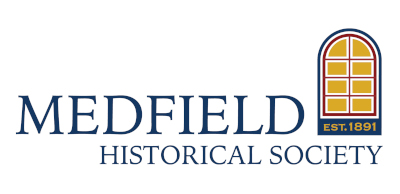Historic Properties
Medfield Sites on the National Register of Historic Places
Medfield has seven sites listed on the National Register of Historic Places. More information on each of these historic places is available at the Medfield Museum and Historical Society Offices at 6 Pleasant Street.
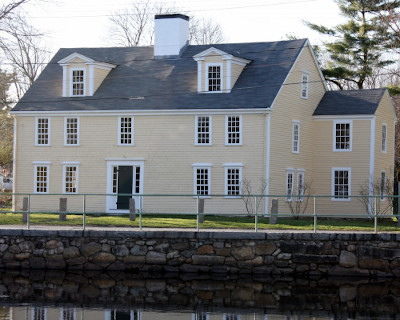
Dwight Derby House
7 Frairy Street, opposite Meetinghouse Pond—1651
The Dwight-Derby House on Frairy Street, opposite Meetinghouse (Baker’s) Pond, was built in 1651. It is one of the ten oldest wood frame houses in America. In 1996 the house faced the wrecking ball, and the town of Medfield bought it to preserve an historic treasure that could serve as a community resource. Thanks to hard work by a dedicated group of Medfield volunteers, and grants from the Massachusetts Historical Commission and the National Trust for Historic Preservation, the house has been stabilized and partially restored.
Rental Inquiries
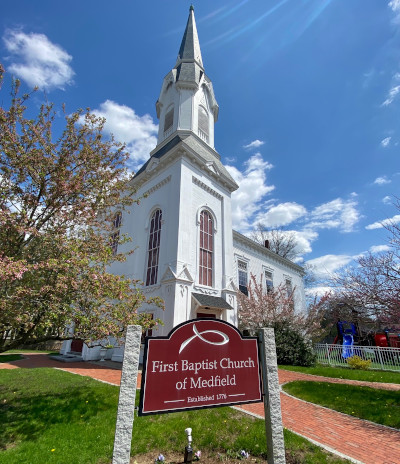
First Baptist Church
438 Main Street—1838
Medfield’s first Baptist congregation was formed in 1752, and the first meetinghouse was erected 20 years later on West Main Street, near the present Route 27 intersection. In 1822 it was enlarged, but in 1838 that meetinghouse was sold. The church bought land at the corner of South and Main Streets (Route 109), site of the present church structure. The new, larger, more centrally located Gothic Revival-style Meeting House was dedicated on October 3rd of that same year. The speedy building contractor was Jonathan Gleason.
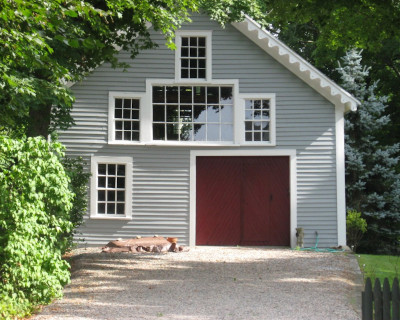
George Inness Art Studio
406R Main Street
George Inness (1825–1894), was one of America’s foremost artists of his time. He lived in Medfield from about 1860 to 1864. Inness’ studio is at 406R Main Street, which is now privately owned. Inness is best known for his landscape paintings, many of which are exhibited in the Boston’s Museum of Fine Arts, the Metropolitan Museum of Art in New York, the Art Institute of Chicago and many other leading museums.

Medfield State Hospital
45 Hospital Road—1896
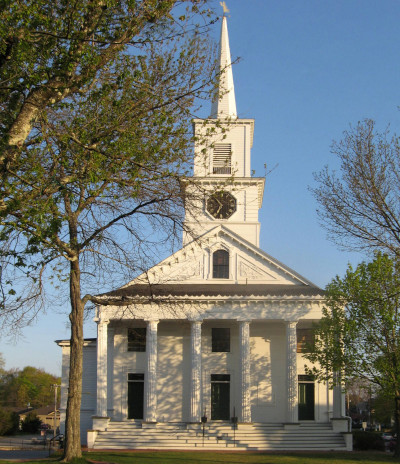
Meetinghouse, now First Parish Unitarian Universalist Church
26 North Street—1789
The 1789 Meetinghouse, now the First Parish Unitarian Universalist Church, is the third town meetinghouse building on that site. The first two were built in 1660 and 1706. There was no heat in any of these buildings until 1826. The church lost its steeple in the New England Hurricane of 1938 and was replaced in 1988. Most Medfield Historical Society programs are held here.
Rental Inquiries
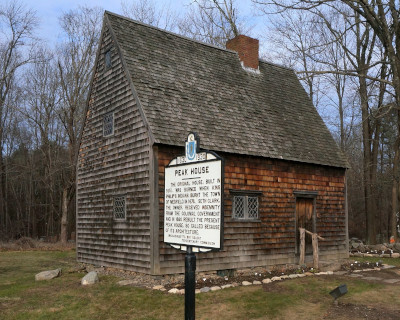
Peak House
347 Main Street—1711
The Peak House, located at 345 Main Street (Route 109), is a first period cottage featuring peak style architecture and post-and-beam construction. It is the only freestanding structure of its kind in the United States and is one of the earliest surviving examples of post-medieval Elizabethan architecture. The original structure, first built in 1668, was burned during King Philip’s War and was later rebuilt. The current structure, built in 1711, has served as both a dwelling and an historical site as well as an artist’s studio and workshop. Some of the original panes of glass in the windows, which were imported from England, can still be seen today.
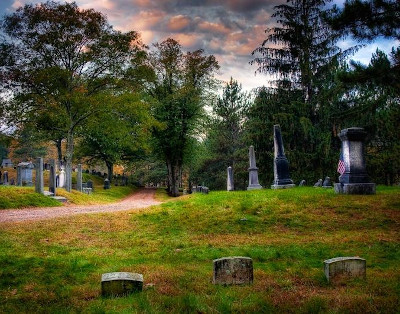
Vine Lake Cemetery
625 Main Street—1651
Established in 1651, Vine Lake Cemetery is the town’s only public cemetery. What began as a modest 4-acre burying ground it has evolved to a modern 30-acre cemetery. Today it is the town’s only outdoor museum. Four seamless gravescapes are celebrated here: the colonial burying ground, the rural cemetery, the garden cemetery and the landscape lawn cemetery. The oldest marked grave is that of Lydia (Albie) Lovell, dating from her 1661 death. Only two of the town’s thirteen founders, James Allen and Samuel Bullen, are interred with marked graves.
Other Historic Properties
In addition to the seven properties listed on the National Register of Historic Places, Medfield boasts even more historic gems.
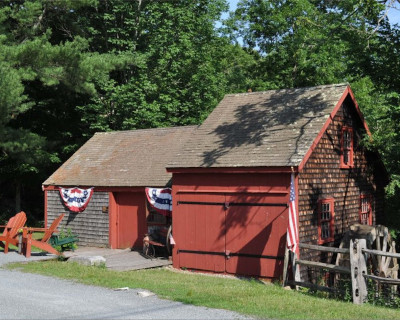
Kingsbury Grist Mill
148 Spring Street—1718
The Kingsbury Grist Mill is the latest incarnation of a tradition on its site dating back nearly 300 years. Captain Joseph Clark built the first mill around 1718 for local farmers to convert their grain to ground meal or flour. The present structure, of post and beam construction, built with wooden pegs and no nails, replaced the earlier mill around 1819, and has been added onto over the centuries. The mill entered a new phase in 1889 with its transformation from a grain mill into a sawmill. About 15 years ago, restoration began on this site, and in 2013 a working 10-foot diameter water wheel was installed.
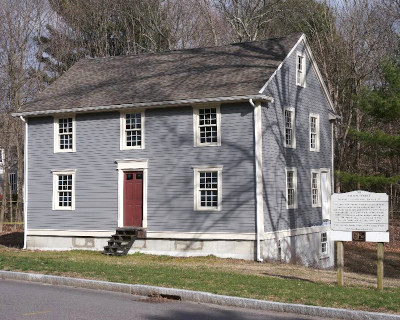
The Lowell Mason House
59 Green Street—1791
This historical 17th century landmark was built around 1791 and boasts such Old-World craftsmanship as hand-hewn post and beam construction and reused timbers. Some components date back to 1650. It was the birthplace of Lowell Mason in 1792. Best known as the “father of music education,” Mason is also known for his familiar arrangement of “Joy to the World” and as composer of “Nearer, My God to Thee.” Mason lived in the house until he was about 21 and visited there during the summer for many years. Mason’s birthplace residence was saved from development in 2011 and moved from its original location at 25 Adams Street to town-owned land next to Hinckley Pond at 59 Green Street.
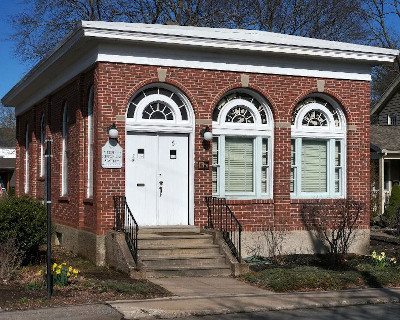
The Medfield Historical Society and Museum
6 Pleasant Street—1922
In 1922 the Medfield Cooperative Bank bought and demolished an old millinery shop at 6 Pleasant Street and in its place erected a very sturdy brick Georgian Revival building featuring full-height round-arched windows and entry, keystones at the center of the brick arches, and a heavy, molded cornice. In 1965, the Medfield Cooperative Bank was acquired by Needham Bank, and the business was moved to 520 Main Street. The town bought the former bank building in 1968 and leases it to the Medfield Historical Society, with the historical society being responsible for all upkeep and maintenance.
